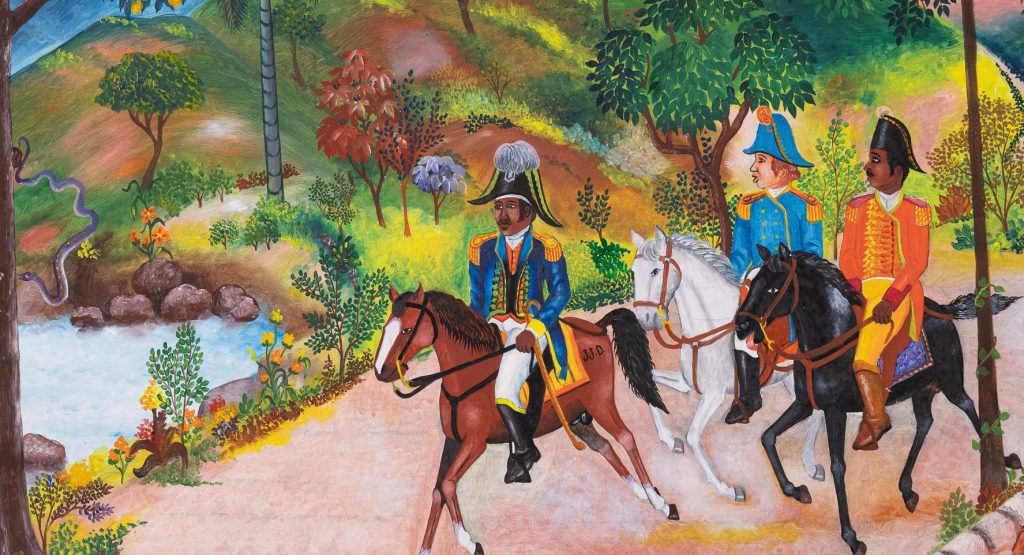In 2004, Haiti was revisited by its ghosts, by the memories and realities of dictatorship and political violence, and, most strikingly, by the French and American troops once again on Haitian soil, spectres of the first black republic’s unfinished history, revenants whose very presence in Haiti is an unavoidable reminder of a nation’s failings, of history’s swirling, eddying movement, write Martin Munro and Elizabeth Walcott-Hackshaw in their edited book titled, ‘Reinterpreting the Haitian revolution and its cultural aftershocks.
The story goes back to the beginning of 22 August 1791, when the Haitian Revolution ended in 1804. Some self-liberated slaves started riots against French colonial rule, which became a revolution and forever liberated the country from colonial rule. For years, a few white people exploited many black slaves, and slaves hit back at white and set belongings on fire. Black, French, Spanish, British and Polish people were involved in this revolution, and ex-slave Toussaint Louverture became Haiti’s most notable general after the revolution.
Sugar plantations are the major economy of Caribbean countries, and white people are the plantation owner. Sugar production needed extensive slave labour, and coffee, cocoa, and Indio plantations were also active. Haitian history does not start from exploited white people, but a long untold history backs them around some people, heroes. When it happened again, Haiti exploded in 2004, and Westerners argued ‘slave/black people couldn’t rule a country as they assumed in 1791, that slaves couldn’t operate a revolution.
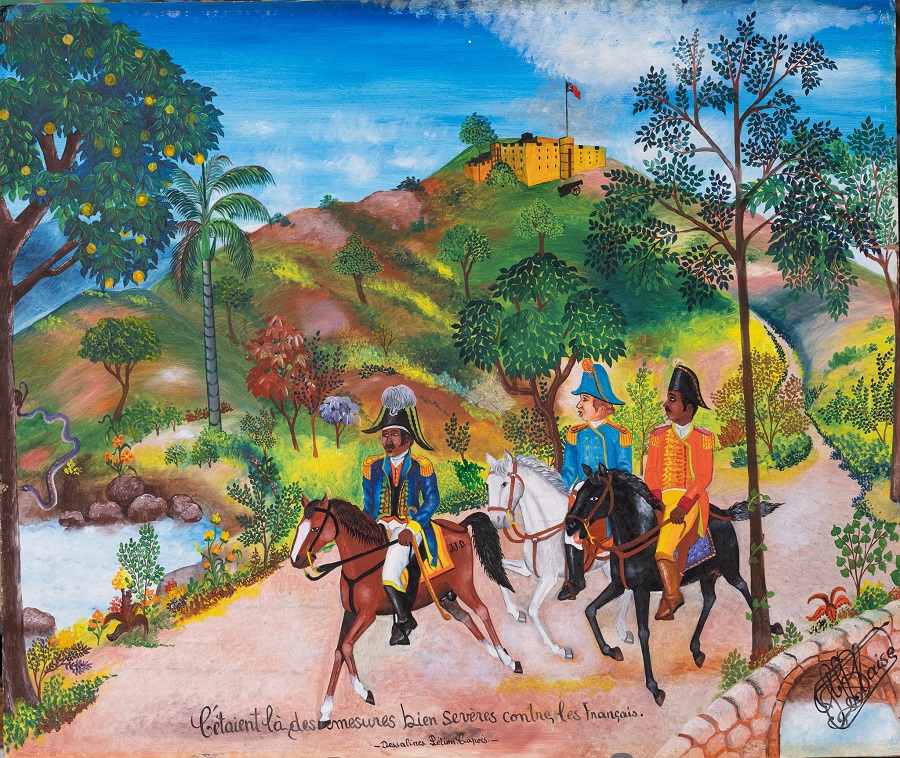
Haitian revolution history is well connected with French history, and just before the Haitian revolution, French National Assembly issued a famous declaration about human rights: Men are born and remain free and equal in rights. That revolutionary declaration was only for the French people. They never accepted 800,000 slaves in France’s overseas colonies as humans, and they never belonged to ‘men’ and did not remain as free and equal to everyone.
The Haitian revolution is the mother of other Caribbean uprisings. The people who led the Haitian revolution are considered war-revolutionary heroes in Haitian and Caribbean history.
One painting carried by Google Art and Culture brings the Haitian heroes and revolution to the discourse. ‘Dessalines, Petion and Capois, 1975 oil on board painting by St.-Louis Blaise, celebrates the war-revolutionary heroes from Haiti and carrying the horrible history of slave-colonialism. St. Louise Balise (1956 – 1995), one of Haiti’s most famous and celebrated artists, depicts the most honourable event in the history of Haiti and the Caribbean world. Blaise’s style is realistic, the design aspect is more prominent than anything, and his effort for details is visible precisely. Blaise brings many things into a canvas, elevating us into a distinct land of realistic life. In Blaise’s painting, realism plays an ambiguous role than abstract.
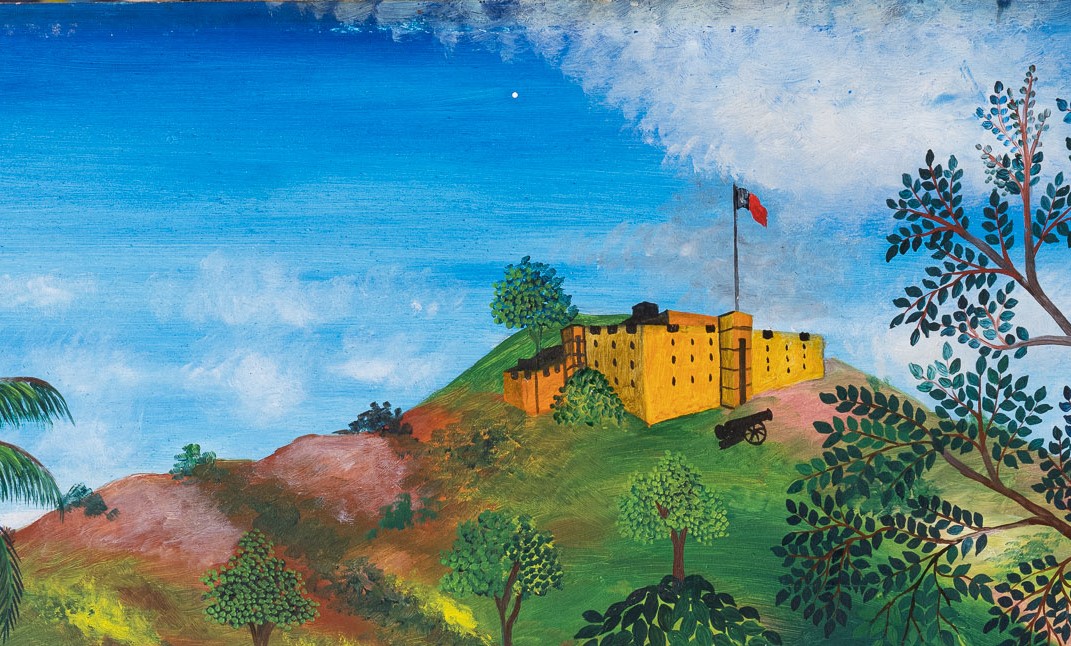
St. Louis Blaise’s inspiration is Haitian history, especially the revolution and the Caribbean history that inspired many African artists, writers, and thinkers. In Dessalines, Petion, Capois by St. Louis Blaise, the artist depicts the Haitian Revolution’s three legends, three prominent in Blaise’s composition and Haitian history. The caption at the bottom of the painting is in French and translates to “These were very severe measures against the French. Dessalines, Petion, Capois”.
Jean-Jacques Dessalines was the leader of the Haitian Revolution and became the father of the nation of Haiti and the first ruler of an independent Haiti in the 1805 constitution. Dessalines was named Emperor of Haiti and ruled Haiti (1804-06) until he was assassinated in 1806; under his rule, Haiti became the first country which permanently abolished slavery. Dessalines was an army officer in the French army, and later he became the leader of the Haitian revolution and fought against the French army.
Alexandre Petion (1770 –1818) is one of the founding fathers of Modern Haiti. After the assassination of Dessalines, Petion was the president of the Republic of Haiti from 1807 to 1818. He was considered a military chief with a background guiding French and Haitian armies. Francois Capois was a Haitian officer in the Haitian Revolution; he was the incharge of the last major war of the Haitian Revolution, the Battle of Vertieres.
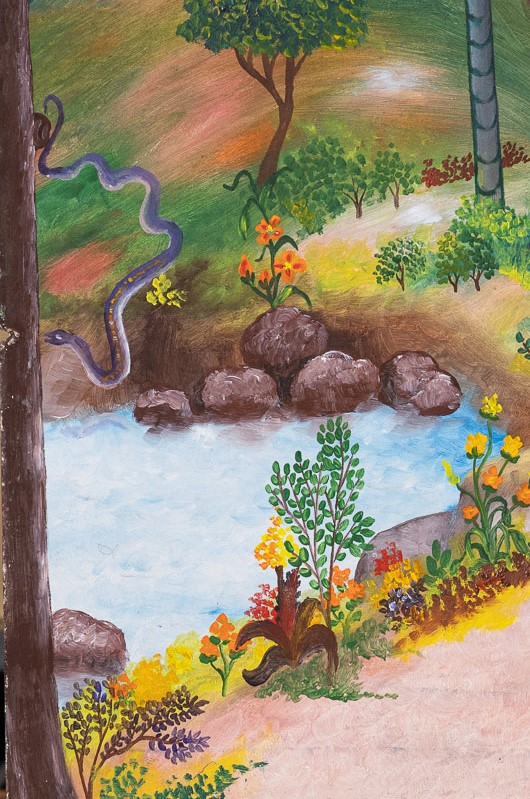
These three people are the significant figures of this painting and the landscape; the artist brings some other elements from the Haitian revolution and history and culture and tradition.
Those three central figures in Haitian history and revolution descended from a fort, the Citadelle Laferriere, a large fortress 27 away from the Haitian capital. They considered the main point of Haitian defensive strategy. Henri Christophe, a Haitian Revolutionary, commissioned this fort with tens of thousands of former slaves. This fort was constructed after the Haitian Revolution as a fruitful victory in abolishing slavery and colonialism, becoming an icon of the Caribbean nation.
Dessalines, Petion, Capois is more than a painting; it depicts the historical events and elements from different periods and merges them with artistic practice. Apart from this historical aspect of Haiti, Artists bring a Serpent named Damballah, considered the most potent loa in Haitian Vodoo practice.
credit: Google Art and Culture
Krispin Joseph PX
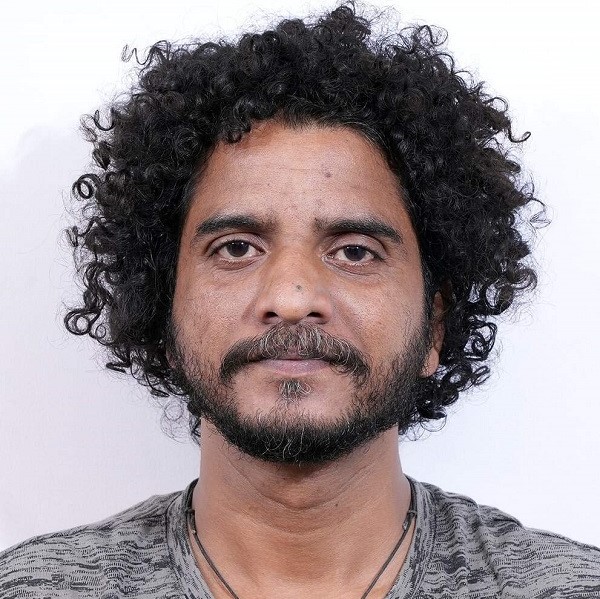
Krispin Joseph PX, a poet and journalist, completed an MFA in art history and visual studies at the University of Hyderabad.

